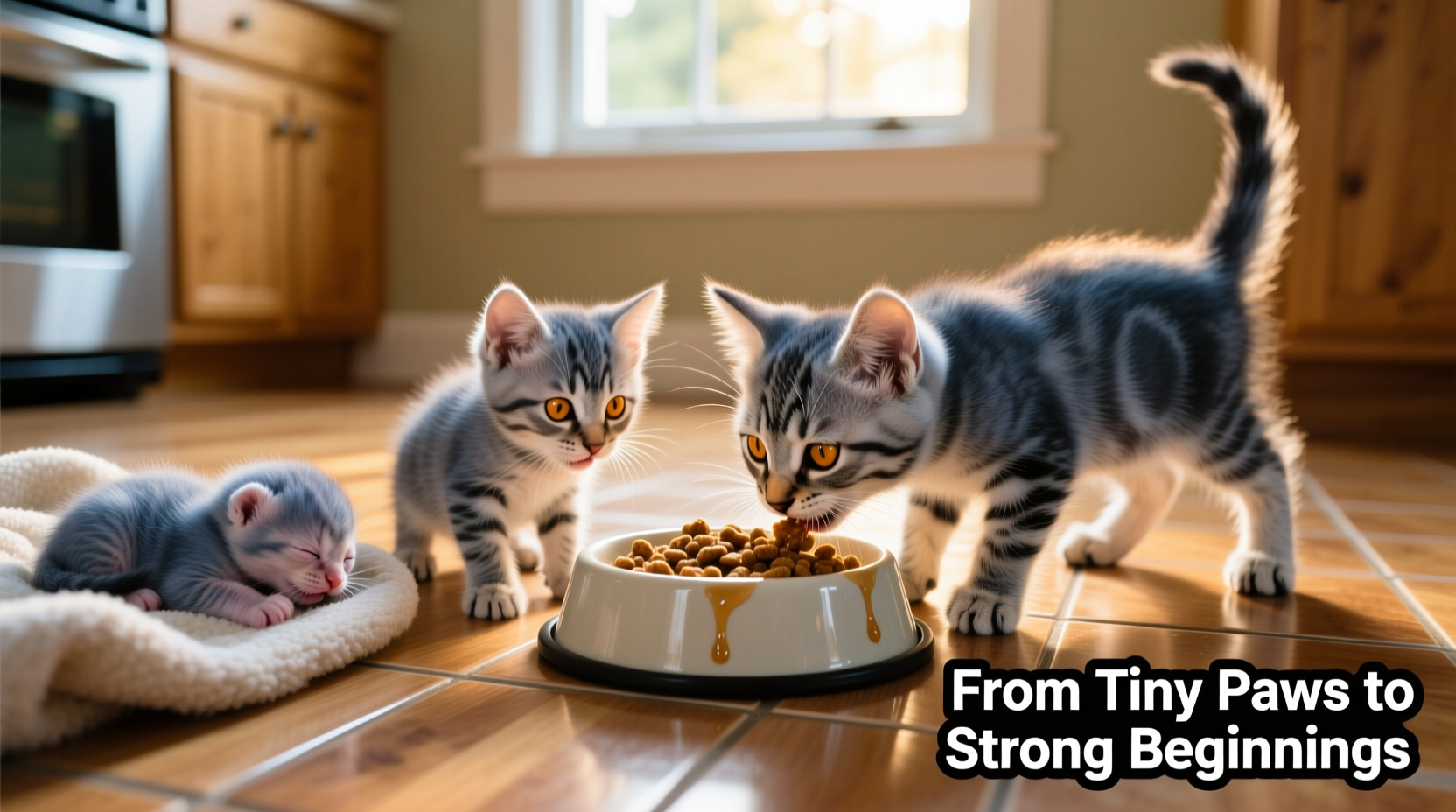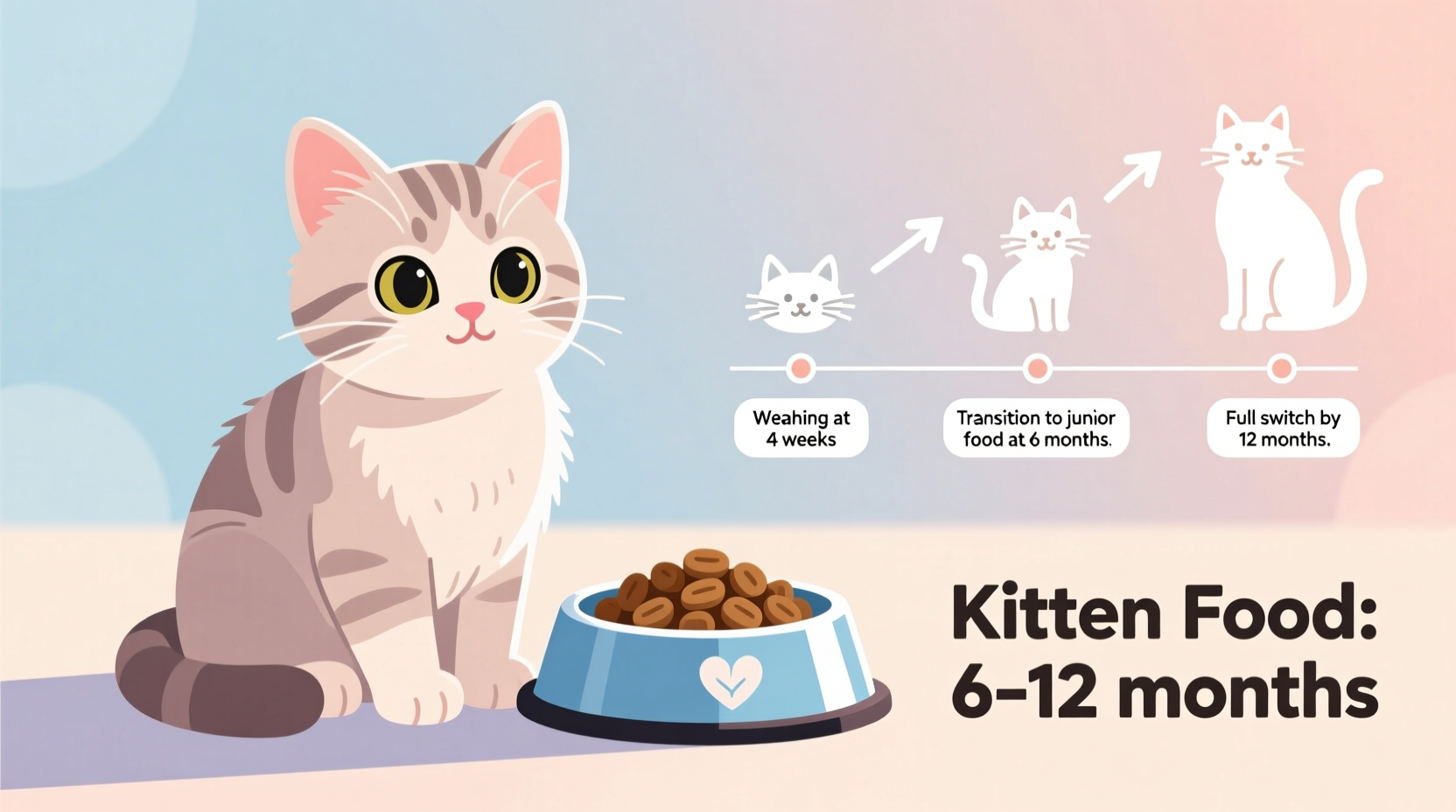Kittens need specialized kitten food until they reach 12 months of age for most domestic breeds. Larger breeds like Maine Coons may require kitten food until 18-24 months due to their extended growth period. This nutritional timeline supports proper development of bones, muscles, and organ systems during their critical growth phase.
Understanding when to transition your kitten to adult food is crucial for their long-term health. As a pet owner, you want to ensure your feline friend receives optimal nutrition during their rapid growth phase. This guide provides evidence-based recommendations from veterinary nutritionists to help you navigate this important developmental stage.
Why Kittens Need Specialized Nutrition
Kittens aren't just small cats—they have unique nutritional requirements that differ significantly from adult cats. During their first year, kittens experience remarkable growth, increasing their body weight by 40-50 times from birth. This explosive development demands higher levels of specific nutrients:
- Protein: Kittens require approximately 30% more protein than adult cats to support muscle development
- Fat: Higher fat content provides concentrated energy for their active lifestyle
- Taurine: Critical for proper vision and heart function, needed in greater amounts during growth
- Calcium and phosphorus: Essential for developing strong bones and teeth
- DHA: Supports brain and eye development in growing kittens
According to the Association of American Feed Control Officials (AAFCO), kitten food must contain minimum protein levels of 30% (dry matter basis) compared to 26% for adult maintenance formulas. These specialized formulations ensure your kitten receives the precise nutrient balance needed during this critical life stage.

Kitten Development Timeline and Nutritional Needs
Understanding your kitten's developmental milestones helps determine when to transition foods. The following timeline shows key growth phases and corresponding nutritional requirements:
| Age Range | Developmental Stage | Nutritional Focus | Feeding Frequency |
|---|---|---|---|
| 0-4 weeks | Nursing phase | Maternal milk or kitten milk replacer | Every 2-4 hours |
| 4-8 weeks | Transition to solid food | High-moisture kitten formula | 4-6 times daily |
| 2-6 months | Rapid growth phase | High-protein, high-fat kitten food | 3-4 times daily |
| 6-12 months | Slowing growth phase | Continued kitten formula | 2-3 times daily |
| 12+ months | Adult maintenance | Transition to adult formula | 2 times daily |
Breed-Specific Considerations for Kitten Food Duration
While most domestic cats reach physical maturity around 12 months, larger breeds have extended growth periods. The Cornell Feline Health Center identifies significant variations in maturity timelines across breeds:
- Domestic shorthairs and longhairs: Typically mature by 12 months
- Siamese, Abyssinian, and Oriental breeds: Reach maturity around 10-12 months
- British Shorthair and Persian: May continue growing until 14-16 months
- Maine Coon, Norwegian Forest Cat, Ragdoll: Often require kitten food until 18-24 months
These extended timelines reflect the longer bone development period in larger breeds. Switching too early to adult food can compromise proper skeletal development in these cats.
Physical Indicators That Your Cat Is Ready for Adult Food
While age provides a general guideline, individual development varies. Watch for these physical signs that your cat may be ready to transition:
- Reaching approximately 90% of their expected adult weight
- Cessation of significant height and length growth
- Development of full adult dentition (all 30 adult teeth)
- Decreased interest in frequent meals
- Stable weight maintenance without continued growth
Consult your veterinarian before making the switch, especially if your cat has health concerns. A professional assessment ensures your cat receives appropriate nutrition based on their individual development.
How to Transition From Kitten to Adult Food
When the time comes to switch foods, follow this gradual transition process to avoid digestive upset:
- Days 1-2: Mix 75% kitten food with 25% adult food
- Days 3-4: Use a 50/50 blend of both foods
- Days 5-6: Mix 25% kitten food with 75% adult food
- Day 7 onward: Feed 100% adult cat food
This gradual approach allows your cat's digestive system to adjust to the different nutrient profile. Monitor for any signs of digestive distress during the transition, including vomiting, diarrhea, or decreased appetite. If problems occur, slow the transition process or consult your veterinarian.
Common Mistakes to Avoid With Kitten Nutrition
Many well-meaning cat owners make these common errors with kitten feeding:
- Switching too early: Moving to adult food before 12 months can deprive kittens of essential nutrients
- Confusing "all life stages" with kitten-specific formulas: While convenient, these foods may not provide optimal nutrition for growing kittens
- Overfeeding: Kittens need more calories per pound, but excessive feeding leads to obesity
- Ignoring water intake: Proper hydration is crucial, especially with dry food diets
- Not consulting a veterinarian: Professional guidance ensures your kitten's specific needs are met
Remember that each kitten develops at their own pace. While general guidelines provide a framework, individual assessment by your veterinarian remains the gold standard for determining the right time to transition foods.
When Special Circumstances Change the Timeline
Certain health conditions may alter the standard kitten food timeline:
- Medical conditions: Cats recovering from illness or surgery may need extended kitten food
- Multiple cat households: Consider separate feeding areas to ensure each cat gets appropriate nutrition
- Neutering/spaying: These procedures change metabolic requirements, potentially affecting transition timing
- Underweight kittens: May need kitten food longer to reach healthy weight
The ASPCA emphasizes that neutering typically occurs between 4-6 months, which changes a kitten's energy requirements. Post-neutering, you may need to adjust portion sizes while continuing kitten food until full maturity.











 浙公网安备
33010002000092号
浙公网安备
33010002000092号 浙B2-20120091-4
浙B2-20120091-4